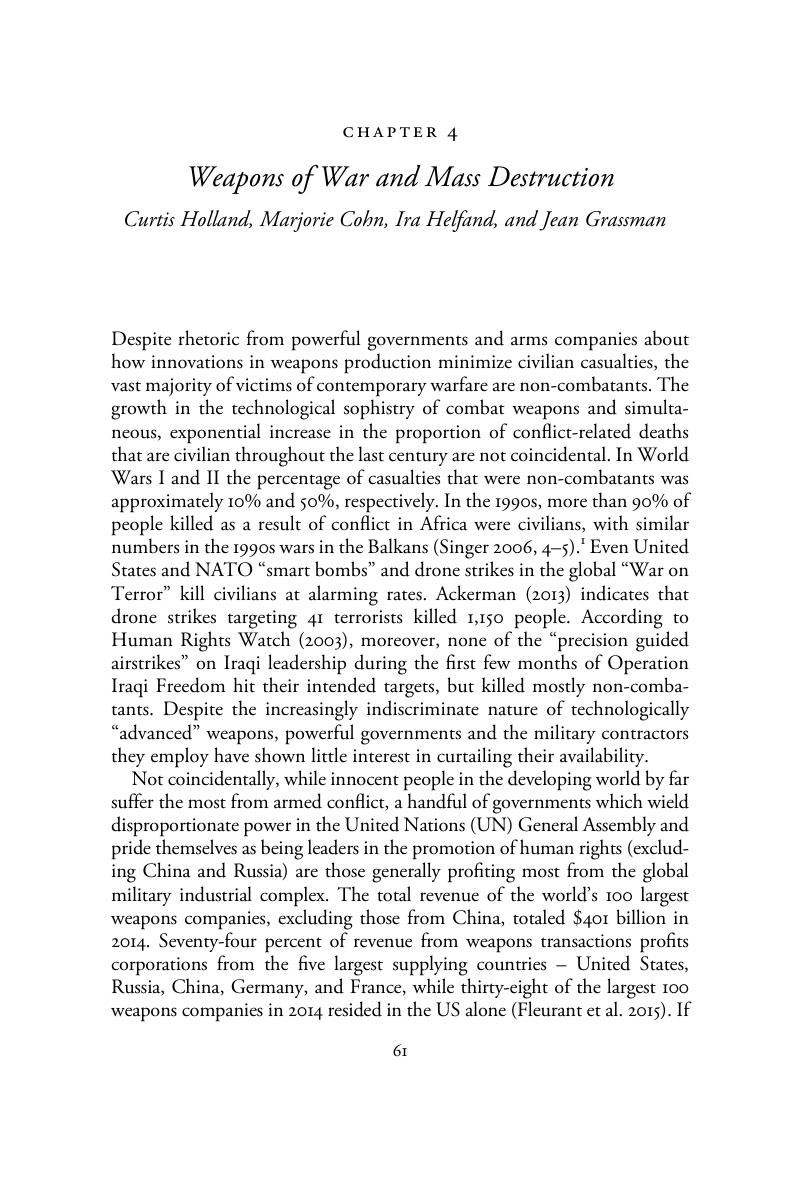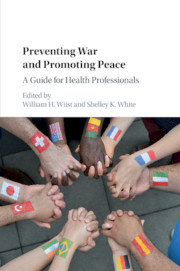Book contents
- Preventing War and Promoting Peace
- Preventing War and Promoting Peace
- Copyright page
- Dedication
- Contents
- Figures
- Tables
- Contributors
- Foreword
- Preface
- Acknowledgments
- Introduction
- Part I The Health Effects of War and Weapons of War
- Chapter 1 The Effects of War on Combatants, Veterans, and Their Families
- Chapter 2 The Health Effects of War on Civilians
- Chapter 3 The Consequences of War on the Natural Environment
- Chapter 4 Weapons of War and Mass Destruction
- Part II Social Determinants of War
- Part III Preventing War and Promoting Peace
- Part IV Teaching and Research in the Health Professions Toward the Prevention of War
- Appendices
- Index
- References
Chapter 4 - Weapons of War and Mass Destruction
from Part I - The Health Effects of War and Weapons of War
Published online by Cambridge University Press: 28 December 2017
- Preventing War and Promoting Peace
- Preventing War and Promoting Peace
- Copyright page
- Dedication
- Contents
- Figures
- Tables
- Contributors
- Foreword
- Preface
- Acknowledgments
- Introduction
- Part I The Health Effects of War and Weapons of War
- Chapter 1 The Effects of War on Combatants, Veterans, and Their Families
- Chapter 2 The Health Effects of War on Civilians
- Chapter 3 The Consequences of War on the Natural Environment
- Chapter 4 Weapons of War and Mass Destruction
- Part II Social Determinants of War
- Part III Preventing War and Promoting Peace
- Part IV Teaching and Research in the Health Professions Toward the Prevention of War
- Appendices
- Index
- References
Summary

- Type
- Chapter
- Information
- Preventing War and Promoting PeaceA Guide for Health Professionals, pp. 61 - 74Publisher: Cambridge University PressPrint publication year: 2017
References
- 1
- Cited by



